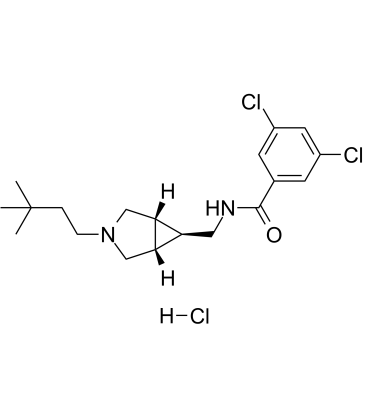ML 218 hydrochloride Suppliers
Total count: 1Updated Date: 2024-04-09 13:25:06

- China(Mainland)
- Contact: Yang
- Phone: 0086-021-52280163
- Email: sales@echemcloud.com
- Website: http://www.echemcloud.com
- Product Name: ML 218 hydrochloride
- Updated Date: 2024-07-15 12:33:58
- Purity: 99.0%
- More information
Inquiry
ML 218 hydrochloride
- CAS Number: 2319922-08-0
- Molecular Formula: C19H27Cl3N2O
- Molecular Weight: 405.79

Related product suppliers
Check more product suppliers